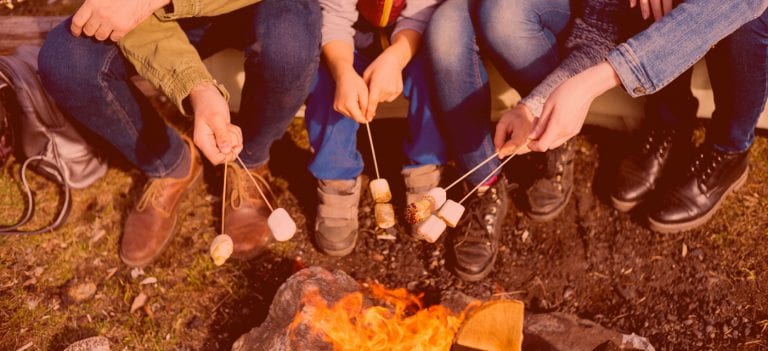Campfire Safety Basics for Your Camping Trip
September 10, 2017

A camping trip can make for the perfect vacation as the weather turns mild. You can unplug and get in touch with nature while drinking in the sights and sounds of the forest, lake, or beach. However, before you unwind and settle into your campsite, it’s important to brush up on your campfire safety. The following tips will help you establish a comfortable and manageable fire so you can soak up lifelong memories and keep loved ones safe.
Campfire Safety
Selecting a Campfire Spot
When setting out to build a campfire, first make sure the area allows for campfires. There may be certain restrictions when it comes to building a campfire, and digging pits may not be allowed. Also be sure not to build a campfire in dry or hazardous areas. Find out if there are existing fire pits or rings available for use.
If no existing options are available, choose an area that is open and level and away from potential fuels. If you choose to create a fire pit, the site should be a minimum of 15 feet away from the tents and flammable objects. Wind gusts and low-hanging branches may create an environment that is not well-suited for a campfire.
How to Build a Campfire
As you prepare your pit, make sure that you keep a bucket, a water source, and a shovel close by. When building a campfire, you will need three types of wood: tinder, kindling and fuel. Tinder needs to be dry, as it is what starts your fire. Tinder can be small pieces of dry bark, grass, pine needles or wood shavings. Once you start your fire, you use larger pieces of wood called kindling. For kindling you can use splinters of wood, small twigs, or sticks. Lastly, you will need fuel wood, which are larger pieces of wood to keep your fire alive.
It is important that all these materials be dry and not damp. Gather small twigs, needles, and dry leaves, sticks less than an inch in diameter, as well as larger pieces of wood. Larger fuel sources need to be kept upwind, away from the campfire. Tinder should be loosely piled in the center of a fire pit. Kindling may be placed over the tinder, or driven into the kindling. After lighting the fire, make sure the match is cold before throwing it into the fire. Add tinder as needed. Place larger fuel wood into the fire to feed the fire and keep it going. Always watch the fire closely and make sure you can easily put it out.
Watching and Extinguishing a Campfire
The campfire should not be left unattended, and children and pets always need to be supervised around the site. In order to extinguish the campfire, the wood should burn to ash whenever possible. Then pour enough water to drown all embers in the fire. Look for the hissing sound to stop.
If water is not available, stir sand or dirt into the embers with the shovel. Use the shovel to remove any embers from remaining logs or sticks. Add water or dirt and stir until materials are cool.
Follow Campfire Safety Guidelines
Not every outing requires a campfire, but if you want to build one, follow campfire safety guidelines to prevent harm to fellow campers or the start of a dangerous forest fire. Campers should keep a first-aid kit available to treat minor scrapes, cuts and burns. Here’s to a safe and memorable camping season!
